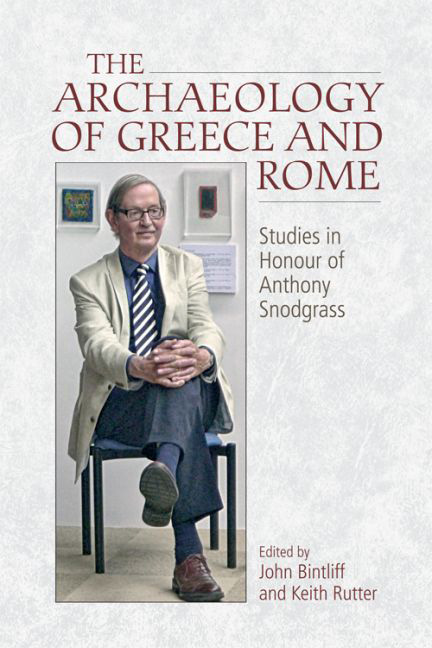Book contents
- Frontmatter
- Contents
- Preface
- List of Contributors
- List of Abbreviations
- Section I Prehistory
- Section II Around Homer
- Section III The Archaic and Classical Greek World
- 7 Potters, Hippeis and Gods at Penteskouphia (Corinth), Seventh to Sixth Centuries bc
- 8 Space, Society, Religion: A Short Retrospective and Prospective Note
- 9 Modelling the Territories of Attic Demes: A Computational Approach
- 10 Hesiod and the Disgraceful Shepherds: Pastoral Politics in a Panhellenic Dichterweihe?
- 11 ‘Is Painting a Representation of Visible Things?’ Conceptual Reality in Greek Art: A Preliminary Sketch
- 12 Coins in a ‘Home Away from Home’: The Case of Sicily
- Section IV The Greeks and their Neighbours
- Section V The Roman and Much Wider World
- Section VI The Scholar in the University and in the Field: Personal Histories
- Index
7 - Potters, Hippeis and Gods at Penteskouphia (Corinth), Seventh to Sixth Centuries bc
from Section III The Archaic and Classical Greek World
Published online by Cambridge University Press: 26 May 2017
- Frontmatter
- Contents
- Preface
- List of Contributors
- List of Abbreviations
- Section I Prehistory
- Section II Around Homer
- Section III The Archaic and Classical Greek World
- 7 Potters, Hippeis and Gods at Penteskouphia (Corinth), Seventh to Sixth Centuries bc
- 8 Space, Society, Religion: A Short Retrospective and Prospective Note
- 9 Modelling the Territories of Attic Demes: A Computational Approach
- 10 Hesiod and the Disgraceful Shepherds: Pastoral Politics in a Panhellenic Dichterweihe?
- 11 ‘Is Painting a Representation of Visible Things?’ Conceptual Reality in Greek Art: A Preliminary Sketch
- 12 Coins in a ‘Home Away from Home’: The Case of Sicily
- Section IV The Greeks and their Neighbours
- Section V The Roman and Much Wider World
- Section VI The Scholar in the University and in the Field: Personal Histories
- Index
Summary
We are here to honour a dear friend and a great mentor. Among many other things, he has taught us respect: respect for the world we are studying, for doubt, for friendship. We are therefore glad of this opportunity to dedicate to him this short synthesis of a study that has engrossed our team for many years now.
The archaeological context of the fictile tablets found at the archaeological site of Penteskouphia, along the Phliasian road at the rear of Acrocorinth, still resists attempts at interpretation. The special interest of this context lies in the fact that it provides lavish evidence for the work of potters. All stages of the work cycle are documented: the extraction of clay from the quarry, the shaping of the vase on the turning wheel, the work at the kiln, from fuelling to watching over the vases in the crucial stages of firing, the finishing and decoration of the vases in the workshop, the loading of the vases onto ships and their transportation by sea.
The complexity of this corpus and the variety of its style, which often stoops to depicting the physical degradation of the craftsman with extreme crudeness, have overshadowed issues related to the nature and characteristics of its archaeological context. When one skims the existing bibliography, one almost gets the impression that the communis opinio is that the tablets are a heterogeneous ensemble of images, in which no unified ‘programme’ can be discerned. We suspect that this impasse is due to the fact that the attention of scholars has been monopolised by the more captivating subject of the tablets themselves. Even scholars who have investigated other aspects of the corpus, whose complexity actually goes beyond the mere depiction of craftsmen, have focused only on individual subjects, as did Geagan (1970), who only examined mythological themes, without relating them to their context.
About the discovery of the pinakes in 1905, we only know that they were lying in two small ravines on the west slope of the Penteskouphia Hill; in this difficult situation, determined by the total lack of information on the structure of the ancient site, useful indications can be drawn from the fact that many pinakes are decorated on both faces with different themes, and that these sometimes combine to form a single image.
- Type
- Chapter
- Information
- The Archaeology of Greece and RomeStudies In Honour of Anthony Snodgrass, pp. 155 - 182Publisher: Edinburgh University PressPrint publication year: 2016

